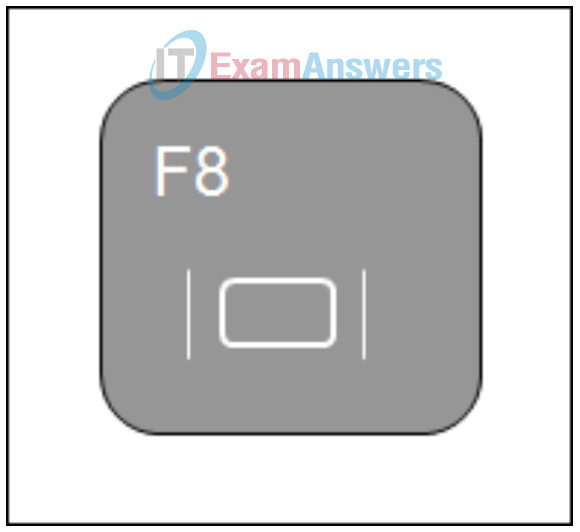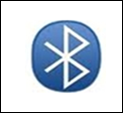1. Which statement is true of laptop motherboards?
- They are interchangeable with most desktop motherboards.
- The form factor varies by manufacturer.
- They follow standard form factors so they can be interchanged easily.
- Most of them use the ATX form factor.
2. Which type of RAM modules are designed for the space limitations of laptops?
- SODIMMs
- SRAM
- SIMMs
- DIMMs
3. What is the maximum range of a Class 2 Bluetooth network?
- 2 meters
- 5 meters
- 10 meters
- 50 meters
4. What can be connected to a laptop VGA port?
- monitor
- keyboard
- mouse
- flash memory
- external DVD drive
5. Which statement is true about laptops?
- Most of the internal components that are designed for laptops cannot be used for desktops.
- Laptop motherboards have standard form factors.
- Laptops use fewer components than desktops use.
- Laptop CPUs do not use cooling devices.
6. A technician is planning to upgrade the RAM on a laptop. Which memory form factor would the technician require?
- SDRAM
- SODIMM
- RDRAM
- EDO
7. What are the two widths of internal hard drives in laptops? (Choose two.)
- 1.8 inches
- 2.5 inches
- 3.5 inches
- 5.25 inches
- 3.8 inches
8. Where is the integrated Wi-Fi antenna typically located in a laptop?
- on the keyboard
- on the system board
- integrated into the wireless card
- above the screen
9. Which wireless technology can be used to connect wireless headphones to a computer?
- NFC
- Bluetooth
- Wi-Fi
- 4G-LTE
10. What is a characteristic of laptop motherboards?
- Laptop motherboards use the same form factors as desktop motherboards.
- Laptop motherboards are proprietary.
- Laptop motherboards use standard form factors.
- Laptop motherboard components are compatible with desktop motherboards.
11. Which technology provides laptops the ability to function on a cellular network?
- mobile hotspot
- Bluetooth
- infrared
- 802.11 Wi-Fi
12. A technician has been asked to decide which laptop components should be cleaned on a monthly basis as part of a maintenance routine. What are two examples of components that should be included? (Choose two.)
- exterior case
- keyboard
- CPU
- optical drive
- RAM
13. Where is an integrated microphone normally located on a laptop?
- near the exterior on either side of the keyboard by the plastic frame
- by the exterior ports
- in the top of the display
- under the keyboard near the pointing device or touchpad
14. What are three common input devices found on laptops? (Choose three.)
- touchpad
- fingerprint reader
- web camera
- external monitor
- PS/2 keyboard
- AC power connector
15. An entrepreneur is opening a computer store in a small town and wants to display a few laptops in the store, but is concerned about security. What laptop feature might assist in addressing this issue?
- GPS
- IR
- LoJack
- security slot
16. Refer to the exhibit. Which laptop component port is circled?

- USB
- VGA
- parallel
- S-video
17. Refer to the exhibit. A laptop user realizes that the key that is shown in the exhibit is used when connecting a laptop to an external projector. What additional key on the laptop keyboard is normally required to make the image on the laptop screen display on the projector?

- Ctrl
- Alt
- Tab
- Fn
18. Refer to the exhibit. What does this symbol indicate when illuminated on a laptop?

- The laptop is connected to an external monitor or projector.
- The laptop battery is fully charged.
- The laptop can communicate with a Bluetooth wireless device.
- The laptop is in energy efficiency mode.
19. A technician is trying to configure an integrated cellular WAN adapter on a laptop. What is the first step the technician should take to configure the adapter?
- Uninstall the device driver in Device Manager.
- Run Windows Update.
- Download software from the cellular service provider.
- Ensure the device is enabled in the BIOS settings.
20. Which three steps must be completed to manually connect an Android or IOS device to a secured wireless network? (Choose three.)
- Input the authentication password.
- Enter the network SSID.
- Choose the correct security type.
- Set the IP address.
- Activate the Bluetooth antenna.
- Change the MAC address.
21. Which two procedures should be done before performing preventive maintenance on a laptop? (Choose two.)
- Attach any devices that are normally used as part of daily operations.
- Verify that all drivers are current.
- Ensure the BIOS is the latest version.
- Disconnect the AC adapter.
- Remove the battery.
- Ensure the latest operating system updates have been applied.
